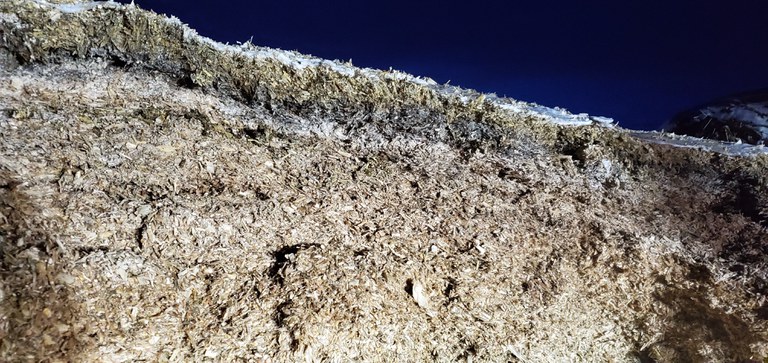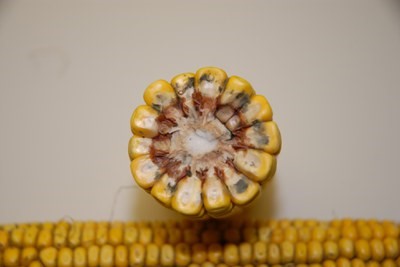Moldy Cattle Feed
How much mold is too much when feeding beef cattle? The goal is to feed very little mold but sometimes that’s an unrealistic expectation in the ranching business. The two most common sources of mold for cattle are hay and silage.
It is extremely difficult to make hay in high rainfall regions without some mold. Untimely rains allow for mold growth in the windrow before baling and when hay is baled too wet, the molds will grow inside the round bale. Looks are deceiving since the hay bales can look fine on the outside but are moldy on the inside. If bales are ground or shredded, we never see the mold in the hay bale other than an abnormal dust cloud.
Corn silage that isn’t covered with plastic will develop several layers of mold. The top, black mold layer is decomposed feed. It has lost most of its feed value and should be discarded and not fed. The next mold layer is white and shows the transition between the non-fermented and fermented silage pile. Usually the white mold layer is drier than the fermented part of the silage pile since it lost moisture due to exposure to sun and wind.

Corn silage with two layers of mold, black and white.
With the ongoing, late corn harvest in eastern North Dakota, molds are being seen on wet, light test weight corn. An NDSU Extension resource on moldy corn can be found here: https://www.ag.ndsu.edu/publications/crops/corn-ear-molds-basic-questions-and-answers/pp1451.pdf.

Molds on ear corn may contain mycotoxins.
Experience indicates that beef cattle can consume some mold without too many problems. However, when sporadic abortions occur in a cow herd, mold or fungal abortions are incriminated. Testing for abortions caused by mycotoxins (toxins caused by molds) at the NDSU Veterinary Diagnostic Laboratory (VDL) should include both the fetus and the placenta.
If you suspect molds are present in your stored feeds, you are encouraged to contact your local NDSU Extension agent (directory). There is an ongoing effort to collect samples of moldy, stored feeds which will help develop a stored feed research testing procedure and program at the NDSU VDL.
Karl Hoppe, Ph. D.
Karl.Hoppe@ndsu.edu
Extension Specialist - Livestock Systems


